Last Updated on January 22, 2023
The searing heat of a fireball. The stink of alchemical fumes. A subtle suggestion that worms its way into your mind, resolving itself into an irresistible urge to obey.
Magic is an intrinsic part of Dungeons & Dragons, allowing those who wield it – whether they be powerful archmages, vile necromancers, or those bound in service to the gods – to do incredible, impossible things.
Magic can raze entire cities to the ground. It can raise the dead, turn back time, and heal the most grievous wounds. As with all powerful things, great effort has been expended in the pursuit of understanding magic – where it comes from, what it can do, and how to harness this power to the caster’s will.
As such, magic in D&D is broken up into eight categories or ‘schools’: Conjuration, Necromancy, Evocation, Abjuration, Transmutation, Divination, Enchantment, and Illusion. Obviously, nothing so powerful and multifaceted could ever be that simple.
In this guide, we’re going to break down the eight schools of magic that exist within D&D – what they do, and some of the spells that best represent them.
Then, we’ll take a look at the origin of magic in D&D and its evolution throughout different editions.
Last, we’ll explore the two different sources of magic – arcane magic and the divine – and explore whether all magic necessarily has to fall within one of the eight schools, or has to be either arcane or divine for that matter.
You can jump to any of these sections using the table of contents below, or keep reading to get started.
The Schools of Magic
There are eight schools of magic in D&D that categorize the different magical effects a spellcaster can produce.
Abjuration

The school of Abjuration (from the word “abjure” meaning “to renounce or reject”) concerns magic that creates barriers, blocks and protects against harm.
Abjuration magic can ward a person or place against the presence of evil (or good), turn aside the blade of a sword, or guard the mind against outside influence.
Sometimes, a good offense is the best defense and, while Abjuration magic is nowhere near as destructive as spells from within the school of Evocation, it is not merely a form of protection, but a means of inflicting harm upon an attacker.
Wizards who study magic within the school of Abjuration are called abjurers and excel at banishing evil spirits, protecting against extraplanar incursions, and defeating practitioners of the other schools.
Armor of Agathys (1st level): You surround yourself with a barrier of magical force, granting temporary hit points and inflicting cold damage on enemies that attack you.
Banishment (5th level): You hurl a creature into another plane of existence, momentarily trapping it inside a demiplane of your own creation, or – if it’s a demon, devil, powerful fey, or djinn – returning it to its native plane, maybe forever.
Imprisonment (9th level): You magically restrain a creature, either in a prison deep beneath the earth, inside a gemstone, bound by chains of magical iron, or place them in an enchanted sleep from which they are unable to wake.
Conjuration

Conjuration magic is all about pulling things from thin air, or from another dimension. A powerful conjurer can create magical storms of lightning or drag a demon out of hell to serve their will.
Conjuration magic can also move things and people from one place to another; creating gates and portals to other places, planes, and dimensions falls within the school of Conjuration.
Wizards who practice Conjuration magic can create small objects like keys, lanterns, statues, or anything else inanimate, and step from one place to another in the blink of an eye.
Conjure Animals (3rd level): You reach into the feywild and summon up to eight creatures of between 0 and 2 CR. You can summon bears, giant spiders, riding horses or, if you have Volo’s Guide to Monsters, a game-breaking swarm of velociraptors.
Dimension Door (4th level): Teleport yourself anywhere within 500 feet, potentially bringing another person or creature with you. Just make sure you can visualize or have a good idea where you’re going or you’re going to get badly hurt and the spell won’t work.
Tsunami (8th level): You create a 300-foot long wall of water to wash away anything in its path.
Divination
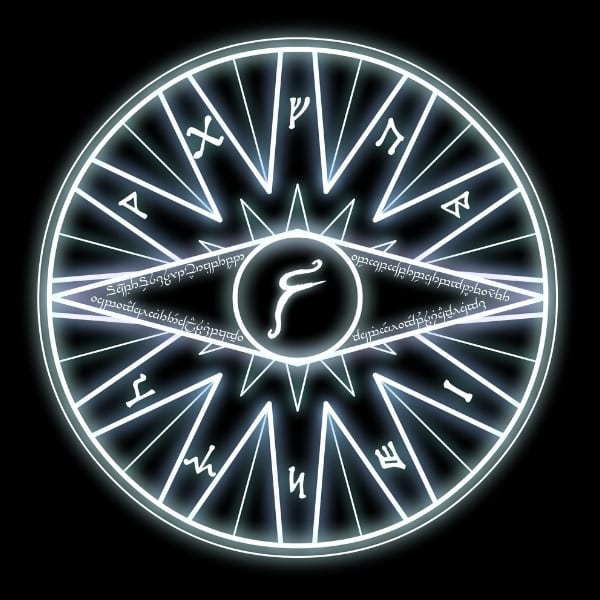
Divination magic is more than seeing the future – although that is an important part of it.
Those who practice this subtle and often-misunderstood art seek to part the veils of space and time, in order to master the skills of scrying (viewing things remotely), discernment (finding the truth of things), knowledge beyond human limitations, and foresight.
Wizards who master Divination magic seem to have command over fate itself, twisting and molding causality to serve their own ends.
Find Traps (2nd level): You learn the location of any device or object that is intended to inflict sudden harm within your line of sight, seeing them outlined by a halo of light.
Locate Creature (4th level): By describing or naming a creature you are familiar with or naming a type of creature, you learn its location if it is within 1,000ft.
Foresight (9th level): A creature you touch gains supernatural insight into its immediate future, receiving advantage on attack rolls, ability checks, and saving throws, and imposing disadvantage on all enemies attacking it for eight hours.
Enchantment
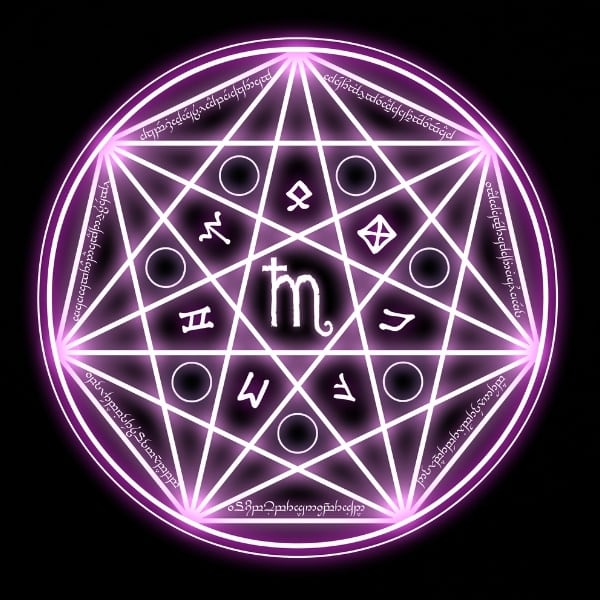
Mind control, arcane compulsions, and false courage – the school of Enchantment focuses on affecting the minds and perceptions of others. Enchantments compel and charm people, bending them to the caster’s will.
Wizards, Warlocks, Sorcerers, and Bards who master Enchantment can be peacekeepers, capable of soothing raw emotions and blind rage. Or they can be tyrants, malevolent tyrants who warp and twist the minds of others against their consent.
This school of magic is, in many ways, akin to magical hypnotism, controlling a target’s thoughts, actions, and behavior.
Hold Person (2nd level): Reach into the mind of a humanoid, forcing them to make a Wisdom saving throw or become magically paralyzed.
Modify Memory (5th level): You reshape another creature’s memories, charming and incapacitating it, as well as reshaping its recollections of the past 24 hours.
Power Word Kill (9th level): You utter a word of command so powerful that, if the target has fewer than 100 hit points, they die instantly.
Evocation
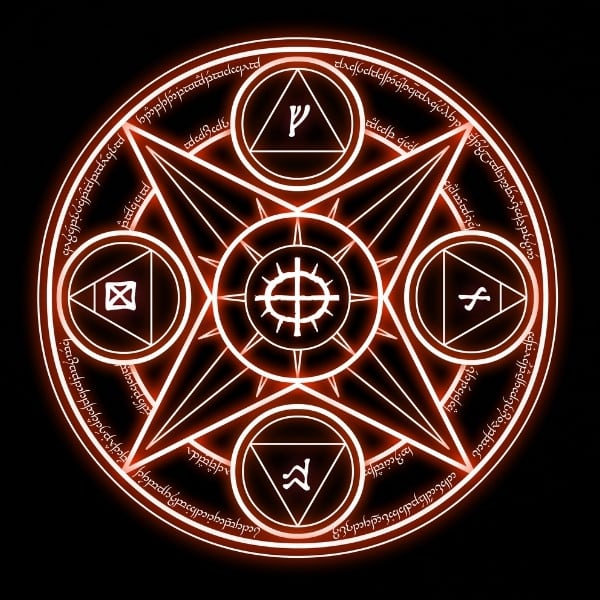
Plumes of fire, walls of ice, and rivers of caustic acid. The school of Evocation focuses on channeling and conjuring elemental effects, hurling fireballs and calling down lighting.
Evokers are some of the most destructive magic users, capable of laying waste to entire armies of enemies or razing cities to the ground. A master of Evocation magic is nigh on a force of nature but also knows how to control their magical effects so as not to harm their allies in the process of cutting down their enemies.
Not only can Evocation magic destroy, but it can also heal grievous wounds and call upon the power of gods to heal or harm, or have more delicate, subtle effects; in many ways, Clerics are just Evokers of a different stripe.
The school of evocation is also by far the most expansive, with a spell list more than twice as long as other schools.
Fireball (3rd level): You hurl a spark of fire from your fingertips, which explodes into a raging ball of flame, incinerating anything in its path.
Mass Heal (9th level): You emit a wave of healing energy that restores as many as 700 hit points to injured creatures around you, cures disease, and removes the blinded and deafened conditions.
Meteor Swarm (9th level): You raise your hands and call down four blazing meteorites from the sky, crushing and burning everything that dares challenge you.
Illusion
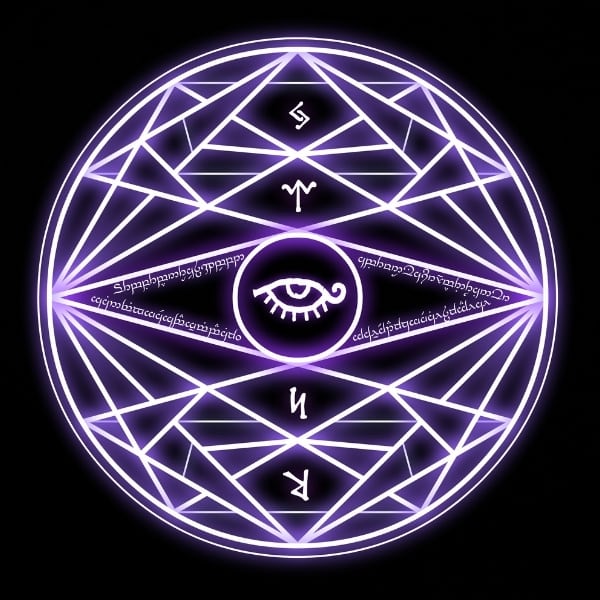
Magic from the school of illusion dazzles the senses, tricks the eyes, the ears, and the nose. In many ways, Illusion magic has a lot in common with Enchantment but focuses instead on deceiving the senses rather than warping the mind.
Arcane pyrotechnics, shimmering silent images, and cunning disguises all have a home within the school of illusory spells. Some illusionists are impish tricksters who delight and dismay; others are cunning assassins or sinister masters of trickery and deceit.
Disguise Self (1st level): Your face, clothing, armor, and belongings take on the illusory appearance of another person entirely.
Minor Illusion (cantrip): You conjure a small sound or silent image of an object or effect that can stand up to all but the closest scrutiny.
Simulacrum (7th level): Over the course of 12 hours, you create a perfect duplicate of a person or creature, capable of doing everything the original can do – although it is a good deal less survivable.
Necromancy
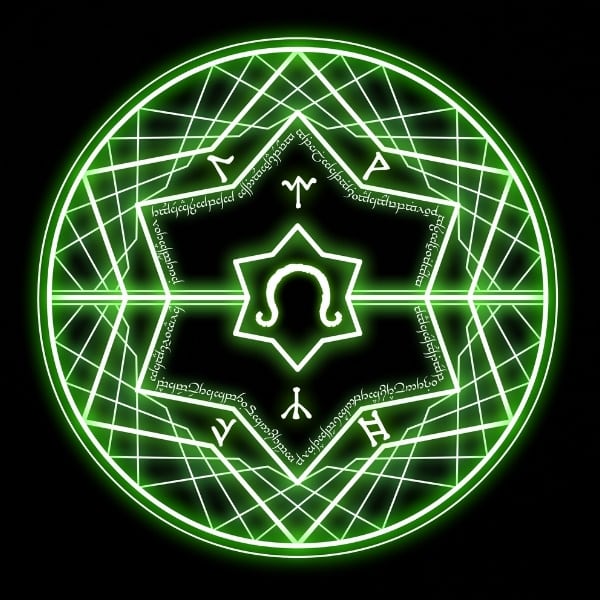
Perhaps the oldest and most controversial school of magic, Necromancy allows magic users to assert control over the very nature of life and death.
Necromancers are a rare breed of pariahs, mad scientists, and reanimators who use their powers to raise armies of shambling zombies, spread malignant diseases, and drag souls back from beyond the veil.
They can obviously raise the dead, but can also toy with the life force of others in more subtle ways, and are particularly adept at all magic that concerns domination, imprisonment, or destruction of the soul.
There are many different ways to reach beyond the veil of death. If you’re interested in necromancy (as part of D&D), check out our guide to playing a necromancer here.
Create Undead (6th level): After darkness falls (never beneath the Sun’s rays) you set about your grim work, raising a personal coterie of ghouls, mummies, or wights from corpses, and binding them in service to you.
Finger of Death (7th level): You extend a single finger and point it at a nearby creature, causing it to be wracked with necromantic energies. If the creature is killed by the 7d8 + 30 necrotic damage coursing through its body, it immediately rises as a zombie under you command.
Magic Jar (6th level): Your soul flies out of your body and into a reliquary container. From there, you may either repossess your inert body or try to possess that of another nearby, forcing the target to be imprisoned in the container as you take command of them.
This might look like Enchantment at first glance, but rather than mind-controlling the subject or dominating them, you are ripping their very soul from their mortal flesh – which is undeniably necromantic.
Transmutation
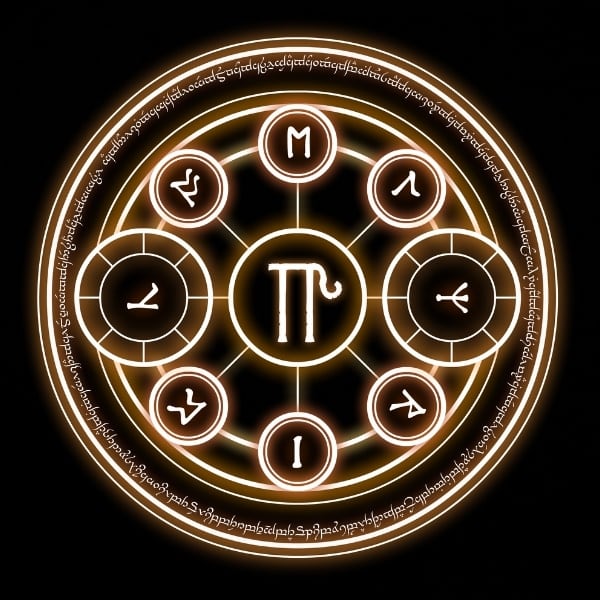
Borrowing its name both from ancient alchemical practices – like the famed transmutation of lead into pure gold – and physics – wherein transmutation means the changing of one element into another by radioactive decay, nuclear bombardment, or something else equally scientific and/or likely to give you unwanted side effects.
Transmutation magic, therefore, deals with turning one thing (or person) into another. It’s easily the school of magic that most closely resembles science in our own world, although this burning curiosity can give way to a sense of burgeoning godhood in the more powerful wielders of Transmutation magic.
One who has mastered Transmutation commands the raw energy of creation, crafting both physical forms and mental qualities as you see fit – a smith who forges reality itself rather than base metals.
Transmutation’s ties to the natural world also makes this school the preferred type of magic practiced by Druids and those with ties to the natural world – although it’s unlikely you’d ever find a druid who knows (or cares) that their Druidcraft is a Transmutation Cantrip.
Awaken (5th level): At the conclusion of a long and painstaking ritual, you can touch a non-sentient creature or plant and imbue it with true, higher consciousness.
Feather Fall (1st level): You, or another that you touch, has their terminal velocity while falling slowed to a safe speed, preventing you from becoming an unpleasant stain on the sidewalk.
True Polymorph (9th level): Some say this is the ultimate expression of the art of Transmutation. You transform a creature into another creature or object, or an object into a different object or creature – anything into anything else, basically, in a way that’s genuine and permanent.
A History of Magic in D&D
The addition of magic was – in many ways – what set the very first edition of Dungeons & Dragons apart from its medieval wargaming predecessor Chainmail.
The game’s creator, Gary Gygax, knew he wanted to put fantasy into wargaming and, if you want to do that, in addition to elves and orcs and dwarves, you need magic.
Now, over the course of five major editions (not to mention all the inter-edition tweaks and alternate versions) of D&D, magic has grown noticeably more complex, with new styles and schools of thought emerging as to how magic should work at the table.
The pendulum has swung pretty wildly back and forth over the years. Now, in Fifth Edition, magic in D&D is kind of a middle ground – a mishmash of all the good ideas that came before it.
For example, let’s look at spell slots and the birth of the humble cantrip. Now, when Gary Gygagx was creating a magic system for the original edition of D&D, he knew he wanted magic to be powerful and utilitarian – the raw cosmic energy of the universe harnessed to the mage’s will.
But he was, perhaps rightly, scared that “If magic is unrestrained in the campaign, D&D quickly degenerates into a weird wizard show where players get bored quickly…”
As a solution, Gygax sought to create a magic system that would allow some sense of balance between spellcasters and martial characters, even though spellcasters would be relatively weak at lower levels and surpass their martial companions at later ones.
Creating a game in which “the various character types are able to compete with each other as relative equals,” Gygax supposed, would “maintain freshness in the campaign.” OD&D contained around 100 spells with inflexible definitions accessible only to the Wizard class as the game’s only spellcaster.
Formalized two years later in Advanced Dungeons & Dragons, the concept of magic users having a number of “prepared spells”, and a number of magical effects they could produce each day is directly inspired by the Dying Earth – a hugely influential series of novels by Jack Vance – in which magic users memorized a spell, which then erased itself from their memories as they cast it.
So-called Vancian magic remained the sole cornerstone of spellcasting in D&D for decades to come.
Assumptions about how magic in D&D worked started to change in 3.5e with the addition of the Sorcerer class – an individual who had access to innate magical abilities, rather than effects learned from a spellbook.
Then, 4e threw out the rulebook completely by essentially making every class into a wizard with “powers” that could be used per day, per encounter, and “at will”. While this approach was walked back in the design of 5e, the concept of “at will” spellcasting remains in the form of cantrips.
As such, the current edition of D&D practices something of a hybrid magic style, with Wizards able to cast simple spells at will, and higher-level spells using a Vancian magic system – and then you have all the other spellcasting classes and forms of magic, from the Warlock’s Pact Magic to the Cleric’s divine spellcasting.
Throughout this whole evolution, however, the eight schools of magic have remained relatively static – although different editions recategorize certain spells from time to time, like the movement of all non-mind-altering spells from Enchantment to Transmutation in 3rd Edition.
Arcane or Divine: Sources of Magic
Although magical powers in 5e can stem from over a dozen different sources – from a Celestial’s favor to the power of the natural world, or centuries of hard study – the fundamental source of any spell breaks down into two categories: the arcane and the divine.
Arcane magic refers to the manipulation of energy, elements, and the consciousness of others. It’s like hacking into the basic code of the universe and rewriting a few lines.
Arcane magic is the caster’s will to power imposed upon the laws of physics (to get a little Nietzschean for a second there), whereas Divine magic is all about channeling the power of another – be it a god, ancient void-dwelling entity, demon, or the formidable wrath of the natural world.
Clerics are the obvious candidate for Divine magic, but Druids, Rangers, and Warlocks also fall within this umbrella.
Beyond the Schools of Magic
Ok, now we’re about to get into hot take territory. Here we go: the eight schools of magic are an entirely artificial construct which limits our understanding of how magic works.
Yes, they have value when it comes to representing how wizards study, think about and use arcane magic, but that very in-game lens has leaked out into our objective categorizations of spells, and the game is worse off for it.
Take the Detect Magic spell, for example. This 1st level Divination spell allows you to “sense the presence of magic within 30 feet of you. If you sense magic in this way, you can use your action to see a faint aura around any visible creature or object in the area that bears magic, and you learn its school of magic, if any.” If. Any.
Magical effects don’t always have to fall within a certain school that is available and known to the players. I think that this idea that every magical effect falls within one magical school or another is kind of detrimental to the fantasy (as in thing you imagine, not the genre) of D&D.
I see DMs faced with a player using detect magic hem and haw over which school of magic to say is being used in their adventure for a full minute when the answer is much more simple: “it doesn’t have a school. You don’t know how this works. I put it in my world because it’s cool.”
Here’s how I think about it. Magic and its schools, systems, and sources, are like languages. Just because the lingua franca is Latin (read: Vancian magic and the eight schools), it doesn’t mean that there aren’t loads of other cultures out there using different linguistic structures to convey meaning just as – if not more – effectively.
The schools of magic are just one way of understanding how magic works; Arcane vs Divine is just one dichotomy you can use to break down the magic in your world – why not Natural vs Industrial? Or Arcane vs Divine, vs Nature vs Demonic; think about all the other ways in which magic can be produced in D&D and find something that works with your idea of the world better than the stuffy teachings of a few long-dead wizards.
Ok, hot take over. Before I go, I do want to say that, although it’s limiting, the schools of magic approach to categorization is a very good way of breaking down and grouping different spells – it just doesn’t need to be objectively applied to everything magical about your universe, lest magic lose its, uh, magic.
Frequently Asked Questions
What are the eight schools of magic?
The eight schools of magic are:
- Abjuration (protection and defense)
- Conjuration (creating something from nothing, summoning, and teleportation)
- Divination (knowing things, from the truth to the future)
- Enchantment (anything that messes with the senses, the mind, and free will)
- Evocation (control over the element – fire, ice, and acid – as well as healing)
- Illusion (the creation of sensory effects that deceive and delight)
- Necromancy (power exerted over life and death)
- Transmutation (the conversion of one thing into another).
The school of Dunamancy (control over gravity and fate) was also added to 5e as part of the Explorer’s Guide to Wildemount.
What is the best school of magic in 5e?
Short answer: it depends. Evocation maybe. Longer answer: You can hold up the school of Evocation as both the most destructive magic type, it’s also the source of all healing magic (although an Evocation Wizard doesn’t gain access to those spells), and has the longest spell list of any magical school. However, every school is situationally powerful.
What school of magic is a construct?
A construct, like a golem, could be brought to life in several ways, including Enchantment (the least probably option, which requires the construct to have been sentient already), Transmutation (using one of the animate or awaken spells to endow something with sentience), or Conjuration (which could maybe bind some sort of spirit to the physical form of the golem. If you’re making a flesh golem, or some sort of unholy soul-mech, the school of Necromancy (particularly the spell Magic Jar) also has potential.
- About Author
- Latest Posts
I played my first tabletop RPG (Pathfinder 1e, specifically) in college. I rocked up late to the first session with an unread rulebook and a human bard called Nick Jugger. It was a rocky start but I had a blast and now, the better part of a decade later, I play, write, and write about tabletop RPGs (mostly 5e, but also PBtA, Forged in the Dark and OSR) games for a living, which is wild.
